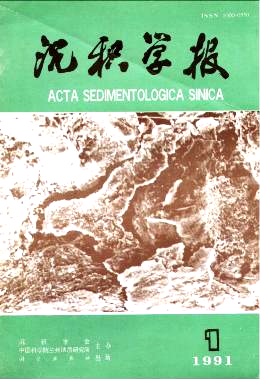HTML
| [1] | 1. 傅力浦,1983,陕西紫阳芭蕉口志留纪地层,西安地质矿产研究所所刊,第6号 2. 傅力浦,宋礼生,1986,陕西紫闭(过渡带)志留纪地层及吉生物,西安地质矿产研究所所礼,第14号。 3. 赵健,1987,陕西芭蕉口志留系浊流沉积的发现及其初步研究。陕西地质,5卷,2期。 4. Barws、.E. and lormark W. R.,1985, Diagnostic parameters for comparing modern submarine fans and ancient turbidite systems.in: A.H.Bouma, R'.R.'Normark, and :V.E.Barnes(eds),Sub- marine Fans and Relatzd Tubidite systems.Springer-Veriag, :\ew Fork, p.13-14. 5. Holier P. L. and Dickinson W. R.,1985, Submarine ramp fades model for deita-fed, sand-rich turbidite systems.AAPG Bull., V.69: p.960-976 6. Hisvott R. N.,1981, Discussion on` deep- sea fan deposits in the Macigno Formation(Midle-Upper Oligocene) of the Gordm:a Vaiiey, noertt.ern.Apennines, ltaly"-Dismssion.J.Sediment.Prtrol.,、.5i:p.1015-1021. 7. Huwcil D. G. and Irorrr:ark W. R.,1982, Sedimentuiogy of submarine fans. in: P. A. SW iu and D.Spearying (eds),Sandstone Depositionul Eavironutents.AAPG Mern.V.31: p.365-404. 8. Mutti E.and :Vorntaric W.R.,1987, Comparing exan:pizs of modern and ancient turbidite sytems: problems and concept;.in: J.K.Leggett and G.G.Zuffa leds),Marine Clastic Sedimentology: cun- cepts and cast studies.Graham and Trotrnan, London, p.1-37. 9. Mutti E.,1985, Turbidite systems and their reiations to depositional sequences. in: G. G. Zuffa (ed),Provenance of Arenites.D.Reidel Pubishing Company, Dordrecht, P.tiS-93. 10. Mutti E. and Ricci Lucchi F. R.,1972, Turbidites of the nurthern Apennines: Intruauctiust to. facies analysis (Eng:ish translation, 1978).Int.Geoi.Rev., V.20: p.125-166. 11. Mutti E.,1977, Distinctive thin-bedded turbidite facics and related deposi}ional cnvirunn.ents in the Eucene Hecho Group (southcentral Pyrenees, Spain).Sedimentology, V.24: p. r07-131? 12. Pichering K.T., 1982, The shape of deep-water silliciciastic systems: a discussion.Geomanne Let-tern,V.2:p.41-46. 13. Picketing Ik.,Stow D. A.V.,Vv'atsonM,and Hiiscon R,1986, Deep-water facies, processes and models: a review and clasaificauon scheme for moaern and ancient sediments. Eartn-sci. Rev., V.23: p.75-174. 14. Shanmugam G. and Moiola R. G.,1988. Submarin fans: Charactznstics, models, ciassincation an: reserwir potentiaLEarth-sci.Rev,v24: p.383-428. 15. Stow D.A.V.,1986, Deep cLasTic seas.in: H.G.Reading(ed),Sedimer.tary cnvironmerts and Facies.Bisekwell Scientific: Pubhcatifie, Oxforud,2nd,p399-444. 16. Stow D..A. V. and Piper D. J. W'.1984" Deep-water fine-grained sediments :facies Geol Soc.Lond.Spec.Pub., V.15: p.611-646. 17. Walkeer R.G., 1978. Deep-water sandstone fades and ancient subrnarine fans; Models for expio ration for stratigraphic traps.AAPG Bull.V.62: p.932-986. 18. Walker R. G.,1984. Turbidoes and associated coarse elastic deposits. in: R. G. Walker(ed)、 Facies models.Geoscience Canada Reprint Series 1,p.171-188. 19. W uellner D. E. and Jams W. C.,1989, Braid:d and rn:ancenng st,bn:arine fan charnel deposlts. |






 DownLoad:
DownLoad: